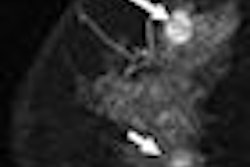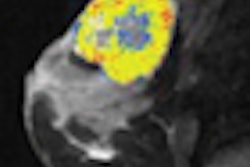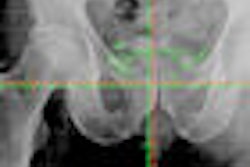The risk of developing cancer again in the same breast after breast-conservation surgery and radiation therapy does not diminish over time, a long-term study of more than 1,000 women with stage I and stage II breast cancer has revealed. Ipsilateral breast relapse (IBR) occurs at a steady rate of approximately 1% annually for up to 20 years, and women with certain risk factors have a much higher chance of recurrence.
The study, published in the July 15, 2008, issue of the International Journal of Radiation Oncology, Biology, Physics (Vol. 71:4, pp. 1014-1021), is a follow-up evaluation of 1,026 women treated at the Netherlands Cancer Institute in Amsterdam between 1979 and 1988. The original study was published in the Journal of Clinical Oncology in 1994 (April 1994, Vol. 12:4, pp. 653-660).
The women were 22-85 years of age at the time of treatment, with a mean age of 50. After having breast-conservation surgery consisting of local excision and axillary lymph node dissection at a number of different hospitals in the Netherlands, all received whole-breast radiation therapy at the Netherlands Cancer Institute.
Each patient received a total dose of 50 Gy in two Gy fractions, and a boost dose of 15-25 Gy, mostly by implantation of iridium-192 brachytherapy seeds. Of the cohort, 154 patients also had adjuvant chemotherapy, and 26 patients took tamoxifen for 12 months or longer.
By 1994, when the first evaluation took place, 6% of the patients under age 40 with breast cancer had a local recurrence. Another 8% were women who had tumors showing vascular invasion. Seven factors were identified as increasing risk in this first follow-up study, but the only independent predictive factors were young age and vascular intervention, according to lead author Dr. Jacques Borger. Women with either or both of these risk factors had slightly higher recurrence rates than the rest of the cohort.
Thirteen years later, in 2007, the study cohort had been reduced by two patients due to missing unique patient identifiers. Of the remaining cohort of 1,024 women, 121 patients, or 11.8%, had developed an ipsilateral breast recurrence. The IBR was a first event for 94% of the group, and for 43 of these 114 patients, the IBR had developed within five years of treatment of the primary tumor. Additional cancers were diagnosed at the same time as the IBR for 32.2% of the group. Some 28.3% of the cohort, or 290 patients, had been diagnosed with distant metastases by 2007.
The same risk factor analyses that were performed in the 1994 follow-up study were repeated. Focusing on the patient, tumor, and treatment characteristics, the researchers discovered that risk factors associated with IBR now included surgical resection margin status, age, vascular invasion, and quantity and type of in situ carcinoma present.
Characteristics of the women who developed IBR
|
The main independent risk factor for IBR was surgical resection margin status, and the researchers speculate that vascular invasion may be a higher risk factor in the first few years after therapy is completed.
The authors also determined that a radiation therapy treatment delay of more than eight weeks following surgery had no impact on relapse risk, nor did different radiation therapy techniques with respect to different megavoltages and the type of boost used.
The fact that breast-conservation surgery was relatively new in 1979, and that the surgeries were performed at multiple hospitals, also did not have any measurable effect on IBR risk. No association was found between histologic grade and IBR, or with adjuvant systemic therapy reducing IBR rates.
Of the study cohort, 661 women are still alive. The 2007 study marked an average of 13.3 years of follow-up. The researchers told AuntMinnie.com that the Netherlands Cancer Institute will continue to study this cohort, as well as expand the study to track a new group of patients treated after 1988.
Based on the second set of research findings, lead author Dr. Bas Kreike, a radiation oncologist at the Netherlands Cancer Institute, and colleagues recommend that breast surgeons discuss with newly diagnosed breast cancer patients the possibility of obtaining tumor-free margins using breast-conservation surgery. If there is a concern that this may not be achievable, the patient should be made aware of the risk of recurrence and the option of a mastectomy.
The researchers also strongly recommend that all women who have breast-conservation surgery should subsequently receive radiation therapy to minimize the risk for local recurrence. They recommend 50 Gy to the whole breast and a boost dose of 16 Gy to the tumor bed. A clinical trial is currently under way in the Netherlands for women under the age of 51 to receive either a boost dose of 16 Gy or an experimental dose of 26 Gy. Patients who participate in this trial are expected to be monitored for long-term results, according to Kreike.
By Cynthia Keen
AuntMinnie.com staff writer
July 21, 2008
Related Reading
Breast intensity-modulated radiotherapy curbs acute skin reactions, May 27, 2008
Breast IMRT without the overspill, March 3, 2008
Breast MRI prior to breast-conserving treatment does not improve outcome, February 7, 2008
Local control matters for long-term breast cancer survival, October 19, 2007
Extra radiation dose helps local control of breast cancer, August 15, 2007
Copyright © 2008 AuntMinnie.com



















